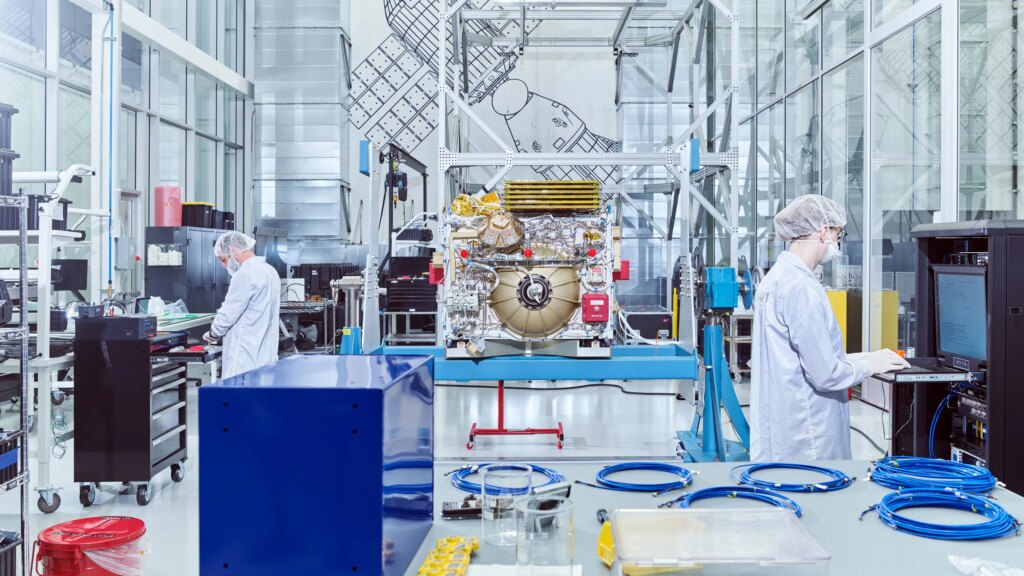Perched on a dusty high desert plain about 100 miles north of downtown Los Angeles, the Mojave Air and Space Port looks more like a final destination for aerospace experiments than a stepping stone to the stars. A field with dozens of decommissioned commercial jetliners bakes in the early morning sun–it’ll eventually hit 110 degrees around noon–and the small shacks set between dusty roads and cracked pavement look mostly empty.
But drive past cracked airstrips and barbed wire gates, and—with the right security clearance—you may be able to walk up and touch the exterior of the next orbital space station: a 2-ton cylindrical aluminum module built by the startup Vast. Called Haven-1, it currently hangs from a 50-foot-tall steel scaffold while it undergoes extreme pressure testing, one of many complicated engineering milestones it needs to hit before its planned launch in May 2026.
Before engineers can install the module’s instrumentation, electronics, and life-support systems, they need to repeatedly pressurize the structure to 2.4 times Earth’s atmosphere to test its workmanship. Massive hoses hooked up to a trio of multistory liquid nitrogen tankers inflate the station—an isogrid metal shell that resembles a waffle cone—with nitrogen gas, like a kid’s birthday balloon. Observers need to stand at least 236 feet away in case bolts or brackets burst. During a visit in May, workers were welding and reinforcing the steel scaffold to make sure the structure can withstand a grueling and aggressive series of stress tests that will see the cabin inflated and deflated 200 times in a row.
Fully-built flight-like control moment gyroscope (CMG). [Photo: Spencer Lowell]
Vast is racing against the clock to launch the world’s first commercial space station—independently, in-house, and in record time. It’s an audacious effort, made possible by the retirement of an icon: the International Space Station, a fixture of childhood imaginations and of humanity’s exploration of space since its first section was launched in 1998. It’s now set to be decommissioned in 2030, via a guided crash into the Pacific Ocean, and Vast wants to replace it.
